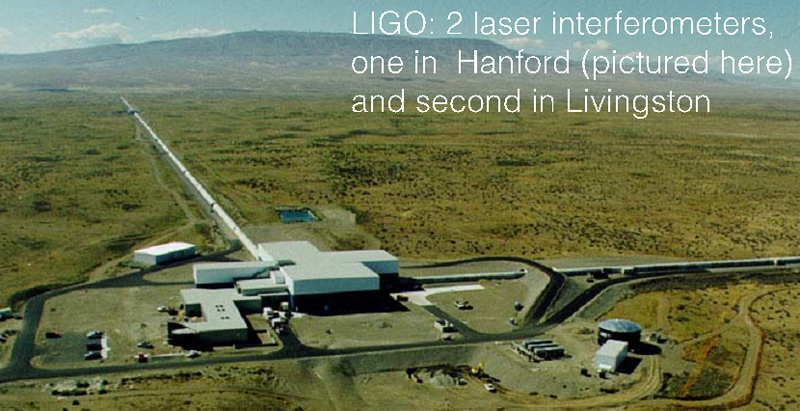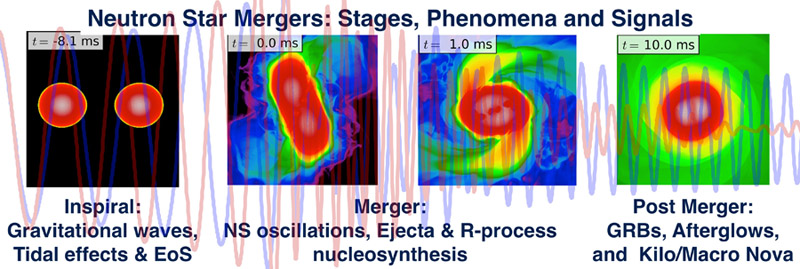
INSTITUTE FOR NUCLEAR THEORY
News
Home | Contact | Search | News archive | Site Map

|
INSTITUTE FOR NUCLEAR THEORY News
Home | Contact | Search | News archive | Site Map |
|||||
|
(INT Program June 30 - July 25, 2014) Reported by N. Andersson, S. Bose, S. Reddy, L. Rezzolla Date posted November 20, 2014 |
|
Advanced LIGO (Laser Interferometer Gravitational-Wave Observatory) is expected to increase the existing detector sensitivity ten-fold the sensitivity by 2016-2017. This would allow us to detect Gravitational Waves (GWs) from neutron star mergers out to about 200 Mpc and open a new window to the universe. The merger of two neutron stars, arguably the most violent event since the big bang, is expected to be the prime source of GWs, and conservative estimates indicate Ad. LIGO could detect tens of events each year. The aim of this INT program was to identify the prospects and challenges of using such detections to learn about the nuclear physics and astrophysics of the merger. 
The program brought together scientists working on all aspects of neutron star mergers: data analysts, astrophysicists, nuclear physicists and numerical relativists.
Presentations and discussions covered a wide range of topics, from numerical relativity simulations of merger dynamics, to studies of nuclear and neutrino process that occur under the extreme conditions.  Key stages of the merger, the associated phenomena and anticipated signals are depicted in the figure above. The prospect of extracting neutron star properties, especially the radius, from observations of tidal effects during the inspiral phase was discussed in detail and led to new collaborations to address the relevant uncertainties. A related topic of interest to nuclear astrophysics is the predictions for the amount and composition of material ejected during the merger and the ensuing nucleosynthesis of heavy elements (r-process). This, and its potential to optical and infrared GRB afterglows called Kilonova generated much interest and discussion, and initiated new collaborations between nuclear physicists and astrophysicists. |